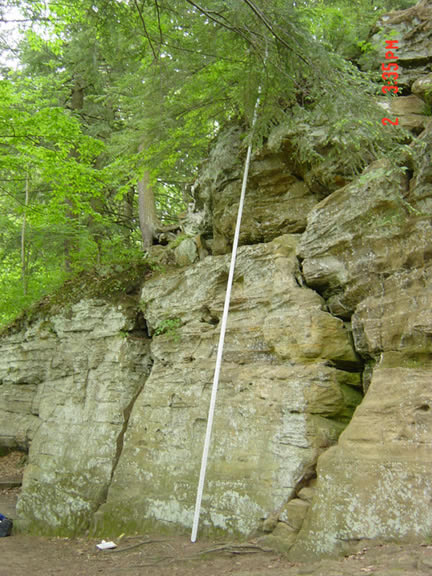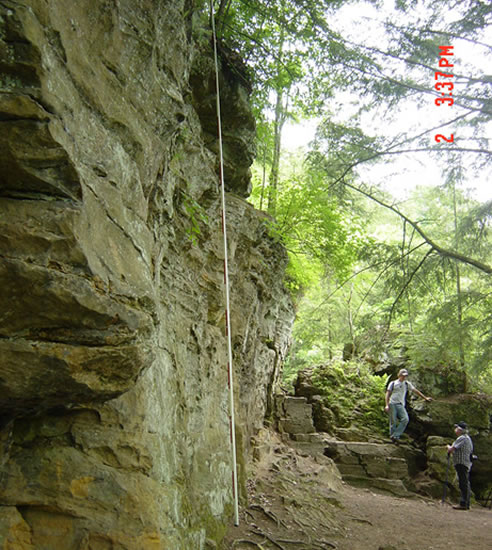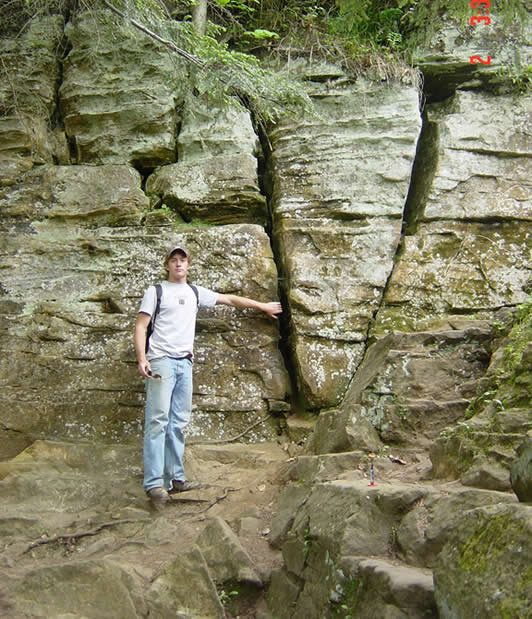The trail along the river in the eastern part of Fitzgerald park takes you past steep exposures dominated by the Eaton Sandstone of the Grand River Formation. Station GL4 marks the location of the ledges along the Grand River, just east of Sandstone Creek. The scaled expandable rod shown in the photo at left was used to measure the minimum thickness of this unit. The view toward this outcrop is south-southwest.
(see Stratigraphic Section Measuring video)
The close-up photo below emphasizes the presence of cross beds in this rock, ranging from a few centimeters to up to a meter thick. The foreset beds are highlighted with dashed red lines and the truncating horizons are solid red lines. In general, the downdip direction of the foreset beds indicates the flow direction during deposition of the crossbeds. Velbel and Brandt (1989) measured the dip direction for a large number of foreset beds in this area and found some variation, but a predominant North-northeast flow direction.
Notice the reddish-brown weathering of this rock.
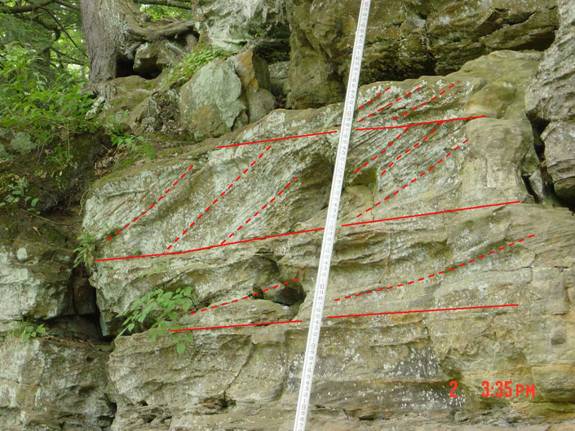
Fractures in bedrock often control the way that the rock breaks. It is common to see several planar fractures oriented parallel to each other within a region to form a set. These parallel fracture sets form in response to tectonic stresses within the rock and often there may be more than one fracture set apparent in an area. In the photo below, the view is northwesterly, looking parallel to the outcrop face. The roughly planar face of the outcrop at GL4 in the photo below is controlled by one of the fracture sets in this area and is generally parallel to the Grand River here. Fractures can be important pathways for fluids (e.g. – groundwater, petroleum) in bedrock.
Several fractures are also evident at a high angle to the outcrop face (see first overview photo of this station).
The photo left is taken just to the northwest of the first photo from this station. Here Joel has his hand on a steeply west-dipping fracture. A second fracture dips steeply eastward to form a downward-pointing triagle of rock between them. It is possible that these are a conjugate set of fractures that formed together in response to the same stresses in the rock.
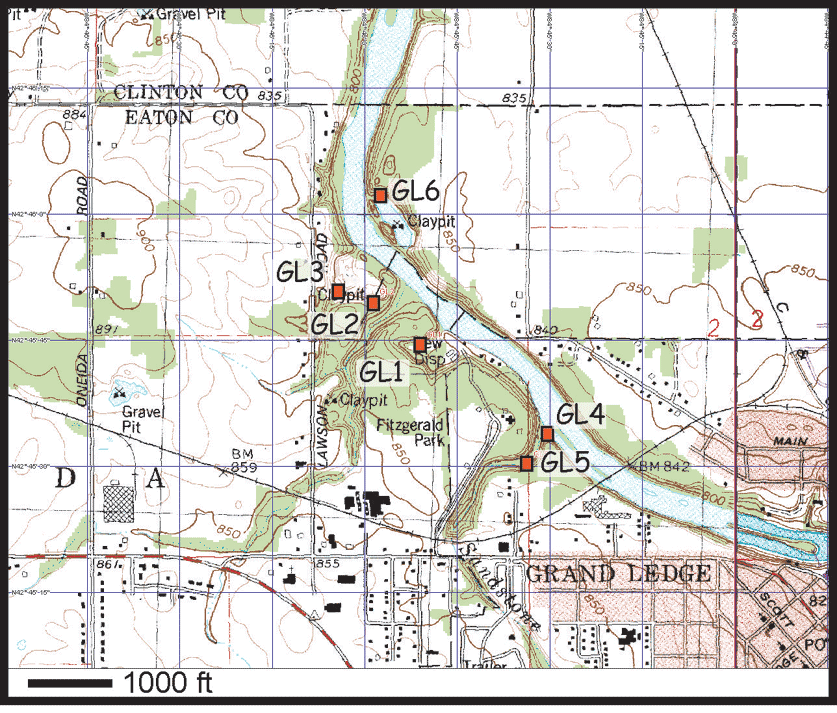
You are at GL4.
Station 4 |
| Tours | Photos | Videos | References | Maps | GL Home | Home |
